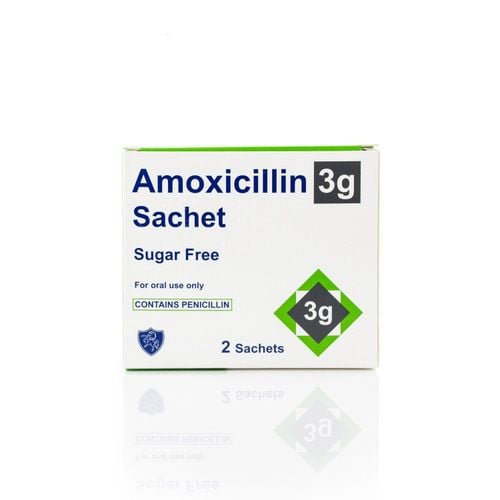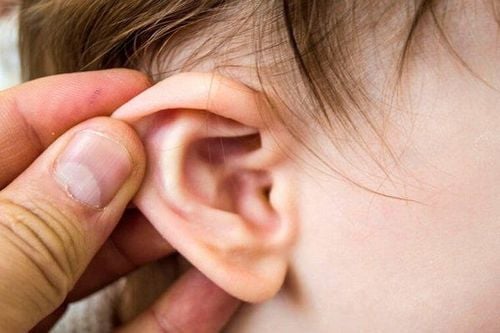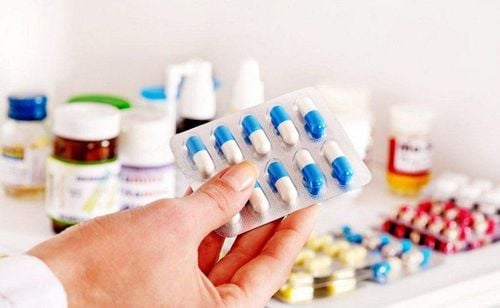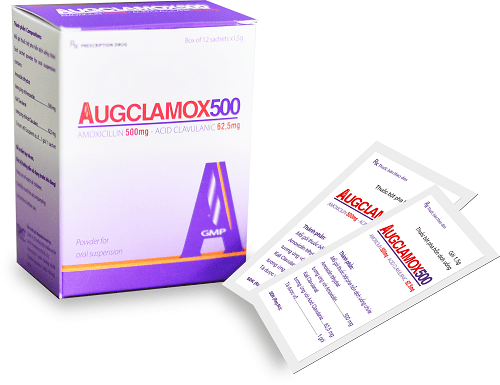This is an automatically translated article.
Hafixim medicine 200mg belongs to the group of 3rd generation cephalosporin antibiotics with the main ingredient cefixim having bactericidal effect. The drug is often used in the treatment of otitis media, pharyngitis, tonsillitis, bronchitis or pneumonia.
1. Uses of Hafixim 200mg
What is Hafixim 200? The main ingredient cefixime in Hafixim 200 has a good bactericidal effect on gram-negative bacteria, is stable to beta lactamases and achieves bactericidal concentrations in the cerebrospinal fluid. However, in gram-positive bacteria, cefixime is less effective than penicillin and first generation cephalosporins. The bactericidal mechanism of cefixime is similar to that of other cephalosporins in that it binds to target proteins that inhibit the synthesis of mucopeptides in the wall. bacterial cells. The mechanism of bacterial resistance to cefixime is either a decrease in the affinity of the cefixime for the target proteins or a decrease in the permeability of the bacterial cell membrane to the drug.
Hafixim 200mg medicine is usually indicated for the treatment of bacterial infections in the following diseases:
Otitis media, pharyngitis, tonsillitis, bronchitis, acute and chronic pneumonia Urinary-genital infections, gonorrhea , skin and soft tissues Treatment of typhoid, Prophylaxis of surgical infections Hafixim is contraindicated in patients with hypersensitivity to any component of the drug or a history of hypersensitivity to cephalosporin antibiotics.
2. Dosage of the drug Hafixim
Hafixim 200 is prepared in the form of tablets to be taken before or after meals, taken whole or broken in half, should not be chewed, crushed or dissolved in water. The usual duration of antibiotic treatment is 7 days, up to 14 days if needed. Otitis media caused by streptococcus pyogenes, the duration of treatment is 10 days. The specific dosage of Hafixim 200 is as follows:
Adults and children > 12 years old: 50-100 mg x 2 times/day, can be increased to 200 mg x 2 times/day Single dose gonorrhea urinary tract infections At least 400 mg Patients with renal impairment need to reduce the dose of Hafixim accordingly: if the creatinine clearance is from 21-60 ml/min, use a dose of 300 mg/day. If creatinine clearance falls below 20 ml/min, use cefixime 200 mg/day. Efficacy and safety of cefixime in children under 6 months of age have not been established.
3. Side effects of the drug Hafixim
In some patients when using Hafixim 200mg, side effects may occur such as:
Hematologic disorders: hemolytic anemia, thrombocytopenia Hepatobiliary disorders: jaundice Biochemical disorders: increased liver enzymes , bilirubin, blood urea Dizziness, headache Shortness of breath Acute renal failure Pseudomembranous colitis Anaphylaxis drug rash Drug fever, arthralgia, erythema Stevens-Johnson syndrome Infectious epidermal necrolysis Toxic, angioedema, urticaria Fever, facial edema Genital pruritus, vaginitis
4. Be careful when using Hafixim
Some general notes when using Hafixim include:
When skin reactions such as erythema multiforme, anaphylaxis, cefixime should be stopped and treated with other appropriate measures. Hafixime in patients with hemolytic anemia It is necessary to reduce the dose of Hafixim in patients with renal impairment including patients on extra-renal dialysis because plasma concentrations of cefixime are higher and longer in patients with renal impairment than in patients with renal failure. There are no data on safety when using Hafixim in children under 6 years of age. Caution should be exercised when using Hafixim in patients with a history of gastrointestinal disease and colitis, especially long-term use because of the risk of overgrowth of resistant bacteria, especially clostridium difficile, in the intestine causing severe diarrhea There is no evidence of harm to the fetus but Hafixim should still be used during pregnancy only when clearly needed No There have been reports of cefixime being distributed into breast milk, so discontinuation should be considered Breastfeeding while the mother is taking the drug Hafixim may cause headaches and dizziness, so caution should be exercised when using it for patients who drive or operate machinery.
5. Hafixim 200 drug interactions
Probenecid may increase the peak concentration and AUC of cefixime, decrease renal clearance and volume of distribution of Cefixime, potentiate the effect of antikinetics (warfarin) and increase blood concentrations of carbamazepine when administered. Simultaneously, the Coombs test may give false-positive results during treatment with cefixime. Nifedipine when co-administered with cefixime increases the bioavailability of cefixime manifested by increased peak concentrations and AUC
.
Please dial HOTLINE for more information or register for an appointment HERE. Download MyVinmec app to make appointments faster and to manage your bookings easily.













